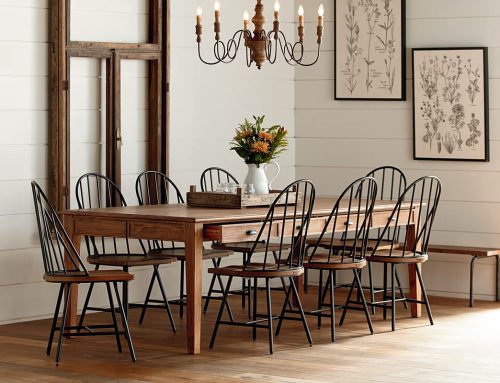Last year, one of the members of the Postconsumers Content Team got married. She neither had an entirely Postconsumer wedding nor an entirely “wedding industry standard” wedding, so along the way she was exposed to almost all of the consumer elements of wedding planning and implementing. And when she was done and the big day was over, she “strongly” encouraged us during our annual content planning meeting to devote a month to exploring consumerism, postconsumerism, and weddings. So we are! One of the elements that shocked our new bride was the emphasis on wedding registries. Though she had been planning to skip the registry all together, she received such pressure from guests who wanted to buy gifts and ensure that they were things that the couple would want that she eventually yielded. And when she did, she began to explore the history and tradition of wedding gifts and how it had turned into such a money-making industry.
What she found might surprise you, and it’s certainly a far cry from the expectation of buying a serving platter that “covers the cost of your plate.” How wedding gifts started is in no way a precedent for the existing industry of wedding registries and gifts.
Wedding Gifts Were Originally the “Bride Price”
Women, get ready to think twice about what the acceptance of wedding gifts says about how far women have come in the world, because the reality is that wedding gifts are just an evolution of the tradition of a “bride price.” The bride price (also later called the dowry but in reverse) was what was paid to the bride’s family in order to secure the woman (or in many cases girl) for marriage. It was paid by the groom’s family and typically included land and animals (a practice, by the way, that still exists in many cultures). When a celebration of the wedding happened, guests weren’t expected to show up with anything in hand. After all, the exchange of material goods had already happened.
Throughout the years, this tradition obviously changed (though with any massive recession we might not be surprised to see it emerge again in the United States)! In the Renaissance the idea of a hope chest developed to add to the bride’s bounty in the form of everything she’d need to run a home such as linens and dishes. This became the heart of the style of today’s typical wedding gift list. Of course, it truly took the consumer machine to take bridal and wedding gifts to the next level.
Oh, Macy’s. This is Your Doing.
The wedding gift craze as we know it, however, really began in 1928. That’s the year that retail giant Macy’s had the brilliant marketing idea of introducing the wedding gift registry. And, of course, because it’s just a brilliant marketing idea, other stores were not far behind in offering their own wedding gift registries. And at first, the wedding gift registry did make some sense. In most cases, couples had not lived together before marriage and married at an age when they had yet to accrue most items that they would need in a shared household. The gift-giving tradition was aimed at helping them to get started in their new home. At base, it was well-intentioned.
Skip ahead to contemporary society and, for the most part, this is no longer the purpose or goal of gift registries. Very few couples no longer live together or live alone managing their own homes prior to getting married. And most marriages involve working individuals who have the basics of what they will need. Gift registries no longer include just the essentials and it’s not uncommon to see elaborate serving wear or even luxury items on registries. The heart of the gift-giver may well still be in the right place in terms of wanting to congratulate the couple on their happy occasion. However, the purpose of the registry has morphed from assisting with living essentials to promoting the acquisition of “stuff.”
Alternatives to Registries
We’ve previously discussed alternatives to traditional “stuff” registries and the etiquette that surrounds them. These days, it’s not uncommon to see registries that essentially simply ask for cash to help with a project or vacation that the new couple is working towards. There are also charitable donation options. In both of these cases, some traditionalists may have etiquette issues with the idea of a couple essentially asking for cash or dictating where donations go. But if you’re planning a wedding, we encourage you to consider your own ideals and comfort levels with such alternatives and perhaps even use them if you already have the satisfaction of enough “stuff.”
What To Do If You’re Uncomfortable Purchasing from a Registry
So what do you do if you’re invited to a wedding or other event where there is a registry and you’re not personally comfortable supporting the industrial marriage complex with its focus on buying potentially unnecessary things? You may be tempted to buy something “off registry” from a vendor or company that supports your eco and societal goals, but we’re going to advise you not to do that. The only thing worse than stuff is stuff that nobody asked for or will use. If you can’t guarantee that the couple will love what you’ve purchased and use it, then it doesn’t matter how ethically correct it is, it’s still just stuff in a pile. You can buy “experience gifts” such as gift cards to restaurants that the couple can enjoy, or you can make a charitable donation in the couple’s name. However, we’re going to recommend that you just give cash. It’s truly the oldest and most appreciated type of wedding gift. You keep your hands free of having to support egregious stuff buying and the couple can choose what they need. Honestly? Chances are they will use that money to finish paying for their wedding!
Did we miss a piece of the history of wedding gifts that you want to share with us? If so, just tell us about it on one of the social media channels below.
Facebook | Twitter | Instagram | Tumblr | Pinterest | Google+





